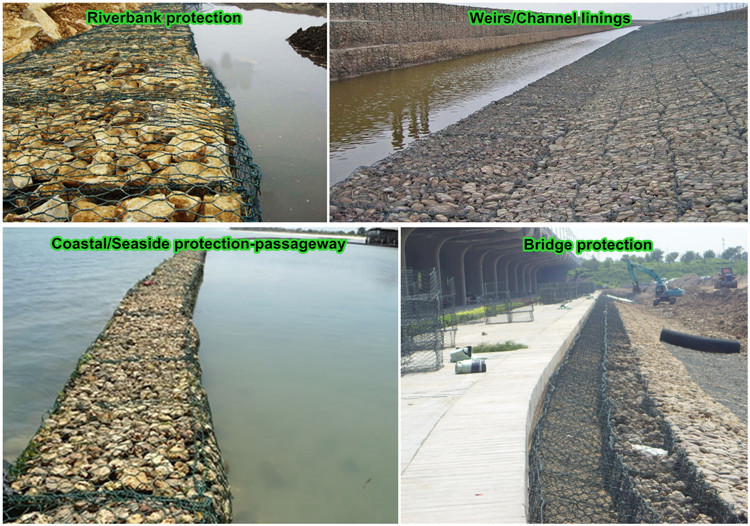Aug . 14, 2024 13:50 Back to list
Benefits and Applications of Temporary Construction Fences in Managing Job Site Safety and Security
The Importance of Temporary Construction Fences
In the realm of construction, safety and security are paramount considerations. One of the most effective measures to ensure these elements is the use of temporary construction fences. These fences play a crucial role in safeguarding the construction site, protecting workers, passersby, and the materials within the premises. This article delves into the importance of temporary construction fences, their many benefits, and key considerations for their use.
Defining Temporary Construction Fences
Temporary construction fences are freestanding barriers set up around construction sites to create a physical boundary. Typically made from chain-link or solid plastic materials, these fences are designed to withstand weather conditions, prevent unauthorized access, and protect the ongoing work from theft and vandalism. Their versatility allows them to be easily installed, relocated, or removed as the project progresses.
Safety and Security
The primary purpose of a temporary construction fence is to enhance safety on site. Construction areas can be hazardous zones, with heavy machinery, open pits, and other potential dangers. By erecting a fence, construction managers can effectively restrict access to authorized personnel only, thereby reducing the risk of accidents. Additionally, these fences act as a deterrent to trespassers who might wander into the site, thereby ensuring the safety of both the public and workers.
Moreover, these fences help in preventing theft and vandalism. Construction sites often contain valuable equipment and materials that can be tempting targets for thieves. A well-constructed temporary fence can significantly lower the likelihood of such thefts, thereby saving companies from significant financial losses.
Liability Protection
temporary construction fences

From a legal standpoint, the presence of a temporary construction fence can provide significant liability protection. If an accident occurs on the construction site involving an unauthorized individual, having a secured perimeter can demonstrate that the construction company took reasonable steps to prevent such incidents. This can be crucial in legal proceedings, potentially mitigating claims against the company.
Aesthetic Considerations
Beyond safety and security, temporary construction fences can also serve an aesthetic purpose. Construction sites can often be eyesores in the community, and a well-maintained fence can help improve the visual appeal. Many companies opt for branded banners or colorful designs on their fences, which not only serve as a barrier but also enhance the marketing presence of the project.
Flexibility and Cost-Effectiveness
Temporary construction fences are a cost-effective solution for site security. Compared to permanent fencing options, they are much less expensive to acquire and maintain. Additionally, the flexibility of these fences allows them to adapt to the changing needs of a project. As construction progresses, the fence can be easily moved or adjusted, ensuring it remains effective throughout various phases of the project.
Conclusion
In conclusion, temporary construction fences are an indispensable element of construction management. They ensure safety, enhance security, provide liability protection, contribute to aesthetic aspects, and offer a flexible and cost-effective barrier solution. As the construction industry continues to evolve, investing in quality temporary fencing solutions will remain a critical strategy for project managers aiming to protect their sites and maintain a safe working environment. By prioritizing the implementation of these fences, companies can not only safeguard their investments but also uphold their reputation as responsible and community-conscious builders.
-
Hop Dipped Galvanized/PVC Coated Temporary Fence - Anping County Xingzhi Metal Wiremesh Products Co., Ltd.|Temporary Fencing Solutions, Durable Security Products
NewsJul.30,2025
-
Hop Dipped Galvanized/PVC Coated Temporary Fence-Anping Xingzhi|Durability&Cost-Effective
NewsJul.30,2025
-
Hop-Dipped Galvanized PVC Fence - Anping Xingzhi | Durable, Quick Deployment
NewsJul.30,2025
-
Hop Dipped Galvanized/PVC Coated Temporary Fence - Anping County Xingzhi|Temporary Fencing, Durable Security, Customization
NewsJul.30,2025
-
Hop Dipped Galvanized PVC Coated Temporary Fences - Anping County Xingzhi|Durable Corrosion Resistance, Quick Installation
NewsJul.30,2025
-
Hop Dipped Galvanized / PVC Coated Temporary Fence - Anping County Xingzhi Metal Wiremesh Products Co., Ltd|Durable Temporary Fencing&Versatile Applications
NewsJul.30,2025



